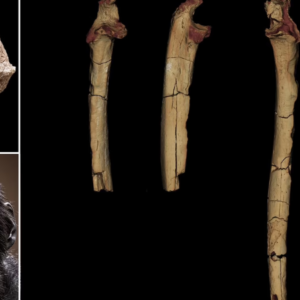Swedish marine archaeologists have discovered the long-lost sister ship of the Vasa, a 17th-century warship considered one of the Swedish navy’s biggest achievements that sank soon after setting sail, per a statement from the Swedish Museum of Wrecks.

With the help of the Swedish navy, the museum’s archaeologists surveyed a strait at Vaxholm, an island near Stockholm, where they first found the shipwreck last winter.
“Our pulses raced when we saw how similar the wreck was to Vasa,” says Jim Hansson, a maritime archaeologist at the museum, in the statement. “Both the construction and the powerful dimensions seemed very familiar. The hope of finding one of Vasa’s sister ships was sparked within us.”
Using the ship’s technical details as well as wood samples and measurement data, the team of archaeologists confirmed that the shipwreck was Äpplet, Vasa’s sister ship, according to the museum.

Unlike the Vasa,which sank within 20 minutes of setting sail in 1628, Äpplet (which means “the apple”)launched in 1629 and remained in service for about 30 years. In 1659, after an inspection concluded that the ship was not worth repairing, officials intentionally sank it.
Shipbuilder Hein Jacobsson constructed both vessels around the same time. But even before the Vasa set sail, Jacobsson worried that it was too narrow and likely to be unstable. With that in mind, he tried to correct those flaws in Äpplet.

Named after the house of Vasa, the Swedish royal family at the time, the 225-foot ship was fitted with 64 cannons, 3 masts and over 700 hand-carved wooden sculptures and ornaments. Many of the cannons sat on the ship’s upper decks, making the vessel’s center of gravity too high and ultimately hastening its demise. It sank on its maiden voyage outside Beckholmen, a small island in central Stockholm, Sweden, claiming about 30 lives. In 1961, a salvage operation recovered the Vasa. Today, itis on display at the Vasa Museum in Stockholm.
In 2019, archaeologists at the Swedish Museum of Wrecks thought they found Äpplet after discovering two other shipwrecks at Vaxholm. But surveys soon revealed that they were the Apollo and the Maria, both from 1648. Still, the archaeologists continued the search until their successful discovery last year.

“This will help us understand how the large warships evolved, from the unstable Vasa to seaworthy behemoths that could control the Baltic Sea—a decisive factor in Sweden’s emergence as a great power in the 1600s,” says Patrik Höglund, a maritime archaeologist at the museum, in the statement.
Äpplet sailed toward Germany when Sweden joined the Thirty Years’ War, carrying about 1,000 men. The vessel was also part of a project by the Swedish navy dating back to the mid-1500s to block a narrow strait off Vaxholm: In 1659, officials sank it—along with nine other large Swedish ships—to serve as part of an underwater barrier that would inhibit enemies from getting to Stockholm by sea.

Hansson says the ship’s discovery will allow experts to analyze differences between the designs of the Vasa and Äpplet and gain a better understanding of how Swedish shipbuilding evolved. “The find is also valuable for those who want to uncover a new piece of exciting history through the old ship,” he adds. “Äpplet is part of our cultural heritage, so we’re arranging a lecture at the museum where we tell visitors more about Äpplet.”
Researchers will make a 3-D image of the Äpplet wreck, Höglund tells CNN’s Hafsa Khalil. Because it is in a protected military area, the team has no plans to recover it.
/https://tf-cmsv2-smithsonianmag-media.s3.amazonaws.com/filer/f6/1c/f61c6b5c-1d4d-4341-b438-60706e3bebc3/vasa3.jpg)



